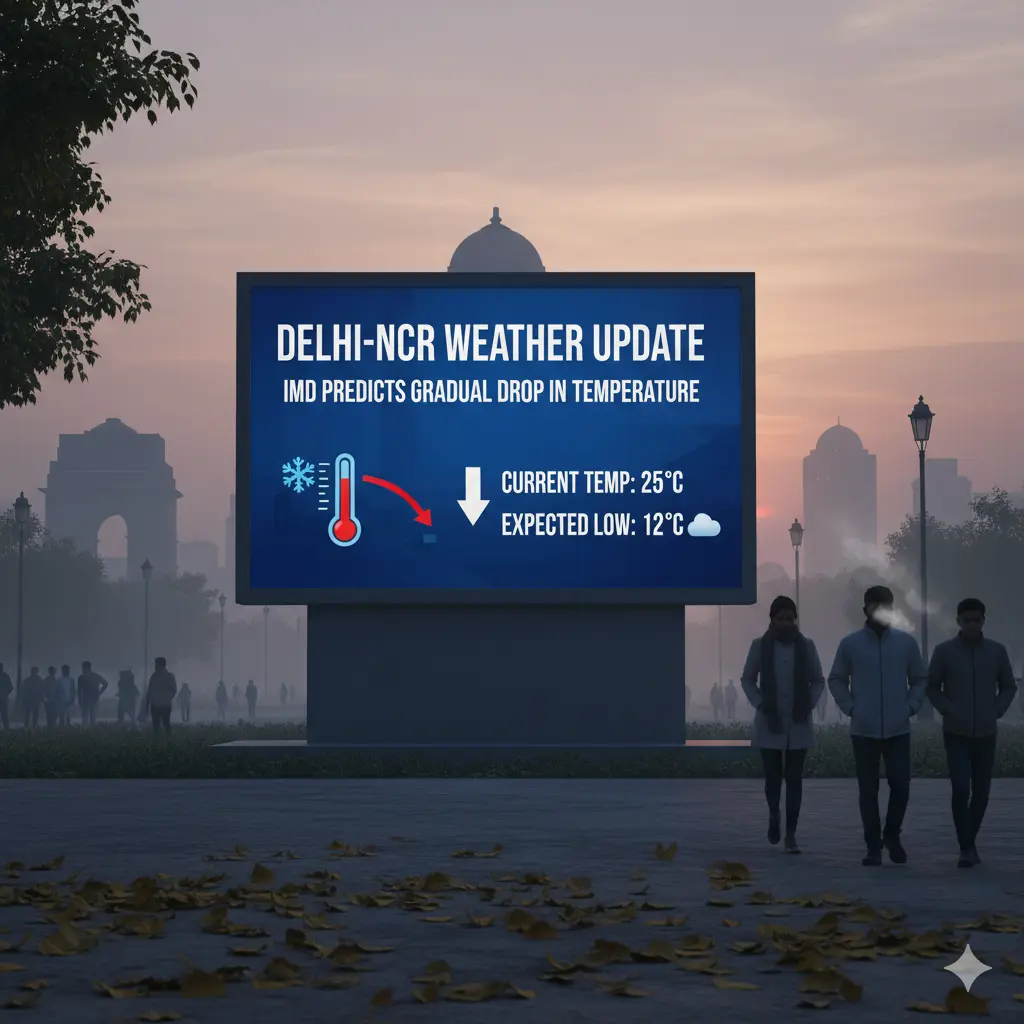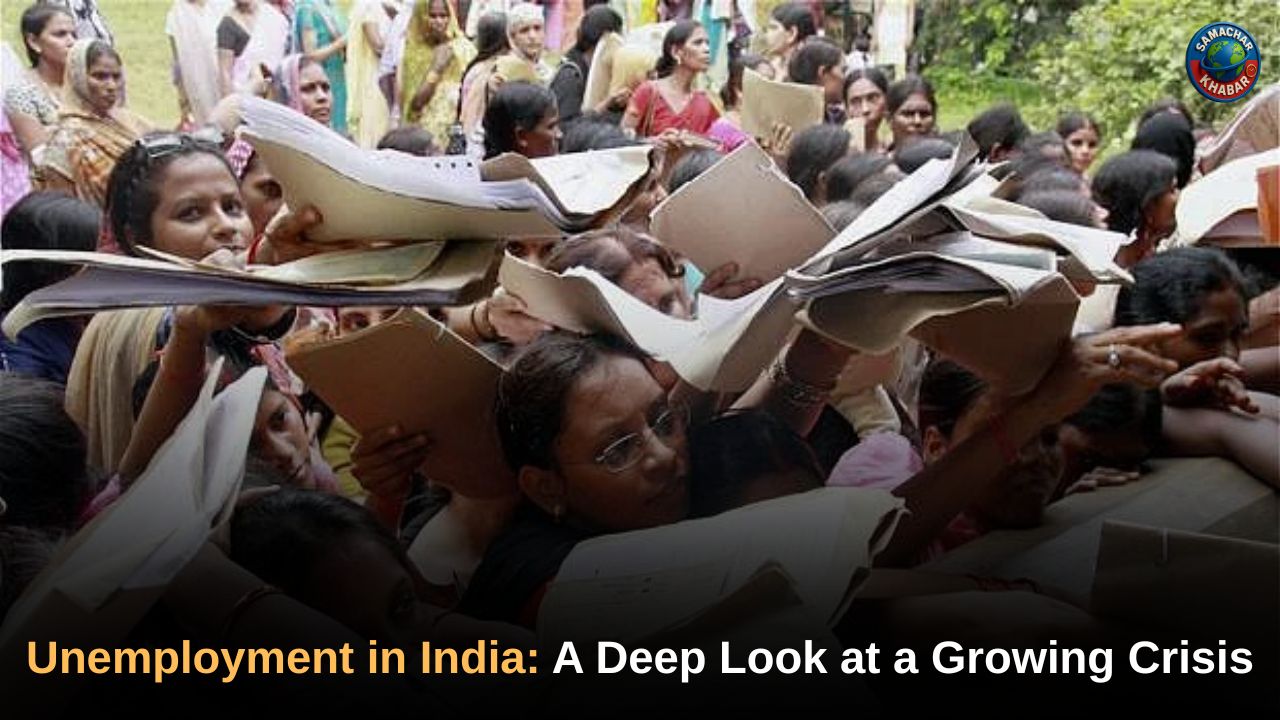Delhi-NCR Weather Update: is slowly stepping into the real winter mood. The Indian Meteorological Department (IMD) has forecasted a steady fall in temperature across Delhi, Noida, Gurugram, Ghaziabad, and adjoining Haryana regions. While November will remain pleasant during the day, nights are expected to turn colder as the month progresses. According to weather experts, the city will start feeling the full effect of winter by the end of November, with a sharp drop in both maximum and minimum temperatures. However, the severe cold wave is likely to make its presence felt only from mid-December onwards.
Key Highlights of the Weather: Delhi-NCR’s Winter Forecast 2025
- IMD Forecast: Gradual dip in both day and night temperatures across Delhi-NCR.
- Cold Wave Timeline: No cold wave expected before December; may begin in the second week of the month.
- Temperature Trend:
- Early November – Max: 30–31°C | Min: 15–16°C
- Mid-November – Max: 27°C | Min: 14°C
- Late November – Min may drop to 11–13°C
- Reason: Western disturbances and northerly winds increase after early November.
- Air Quality: AQI improves from ‘Very Poor’ to ‘Orange Zone’ due to stronger winds.
- Cyclonic Activity: Arabian Sea and Bay of Bengal systems weakening gradually.
Cyclonic Systems and Western Disturbances Shape Early November Weather
According to the IMD, a cyclonic circulation over the Arabian Sea has been changing its track frequently, while another system over the Bay of Bengal has weakened significantly. A residual circulation persists over Bihar. These shifts have affected the regional wind pattern, allowing cool northwesterly winds to flow across Haryana and Delhi-NCR.
A weak western disturbance moved past the region at the beginning of November, resulting in a noticeable dip in nighttime temperatures. Another mild disturbance was expected to become active around 3 November, bringing minor changes to the northern parts of Haryana between 4 and 5 November. Despite these minor shifts, the daytime weather will continue to remain mostly clear and comfortable.
Steady Cooling Pattern Expected Throughout November
The IMD has predicted that the entire month of November will experience a steady decline in temperature, particularly during the nights.
In the first half of the month, the maximum temperature will hover around 30–31°C, while the minimum will remain close to 15–16°C.
As the month advances, the minimum temperature may fall to 11–13°C.
This means Delhi-NCR will witness clear skies, dry air, and pleasantly cool evenings during the first fortnight, followed by sharper chills during the second half of the month.
Also Read: Pollution Emergency: Delhi’s Last Hope Hinges on Cloud Seeding (Artificial Rain) Trial on October 29
Experts explain that two to three western disturbances could become active by the end of November, bringing snowfall to northern hill states. These icy winds will travel down to the plains, causing both daytime and nighttime temperatures to drop significantly.
Chilly Nights, Cleaner Air: The Early Signs of Winter in the Capital
The national capital and surrounding areas including Noida, Gurugram, and Ghaziabad have already started experiencing mild winter chills. The minimum temperature is projected to reach around 14°C by 9–10 November, marking one of the coldest nights of the season so far.
This fall in temperature has also contributed to improved air quality. Winds have strengthened after Sunday night, dispersing pollutants and shifting the Air Quality Index (AQI) from the ‘Very Poor’ category to the ‘Orange Zone’ (Poor).
Meteorologists believe that if the wind speed remains consistent, the pollution level may reduce further, providing temporary relief from smog.
How 2025 Differs from the Previous Year
Unlike 2024, which witnessed record-breaking warmth, 2025’s weather pattern suggests an earlier and more intense winter onset for North India.
- October 2024 was the hottest in 73 years.
- November 2024 was the warmest in eight years, with an average temperature of 29.4°C, the highest since 2016.
- December 2024 also recorded above-normal temperatures for half the month.
In contrast, this year’s November is behaving differently, temperatures are falling steadily, and cool winds from the northwest are reinforcing the seasonal shift much earlier than usual.
Expert Insights: Northerly Winds and La Niña Effect to Intensify Cold
Dr. Chandramohan, Nodal Officer of the Environment Club, Government College Narnaul, stated that the absence of major weather systems will keep daytime weather pleasant, but night temperatures will continue to drop due to cold northerly winds.
Also Read:
IMD’s extended outlook also mentions the possibility of a La Niña phase, which often brings colder-than-usual winters to northern India. Experts anticipate that the upcoming winter may feel sharper and longer than the past few years.
Precautionary Measures and IMD’s Advisory
While no cold wave is expected until mid-December, IMD has advised residents to start preparing for colder nights. People heading out early mornings or late evenings are encouraged to wear warm clothing, especially as winds strengthen over the coming weeks.
Authorities in Delhi have also activated parts of their Cold Wave Action Plan 2025–26, focusing on vulnerable areas and night shelters to ensure safety during harsh weather spells later in the season.
A Calm November Before the True Winter Sets In
As Delhi-NCR enjoys its cool and sunny November days, the capital is slowly gearing up for a sharper winter turn. The mercury’s gradual fall and improving air quality signal the arrival of the season’s transition phase. IMD forecasts suggest that by the end of November, the chill will intensify, paving the way for a full-fledged winter by mid-December.
With cyclonic activity fading and northerly winds dominating, North India is on track for a distinctly colder season, one that begins gently but promises to deepen as December unfolds.
Beyond Earthly Seasons: The Divine Realm Described by Tatvdarshi Sant Rampal Ji Maharaj Ji
While the Earth witnesses constant shifts in weather, summer, monsoon, autumn, and winter, Tatvdarshi Sant Rampal Ji Maharaj Ji reveals the existence of a supreme realm known as Satlok, where the climate is eternally pleasant. In that divine abode, there is no heat, cold, or decay. Everything remains evergreen and pure forever.
According to His spiritual discourses, Satlok is adorned with radiant mountains, divine rivers of milk and curd, and fruits that never spoil. It is the eternal, immortal world mentioned in the holy Gita and several ancient scriptures. There, no being ever ages, falls ill, or dies, because that realm is beyond the cycle of birth and death.
Just as the sacred Ganga River on Earth remains pure and unspoiled, it serves as a glimpse of that eternal, flawless world. To reach Satlok, one must take refuge in a Tatvdarshi Saint, who imparts the true method of worship as revealed by the Supreme God Himself.
Those who seek to understand how creation began, who we are, and how to return to our eternal home can explore this divine knowledge through the official website and channel below:
Website: www.jagatgururampalji.org
YouTube Channel: Sant Rampal Ji Maharaj
FAQs on Delhi-NCR Weather and Upcoming Cold Wave Predictions
1. When will winter start in Delhi-NCR in 2025?
According to IMD, Delhi-NCR will experience mild chill through November, with strong cold conditions expected from mid-December onward.
2. What is the expected temperature in Delhi this November?
IMD predicts maximum temperatures around 27–30°C and minimum temperatures dropping to 11–14°C by late November.
3. Will there be a cold wave in November 2025?
No. IMD confirms no cold wave this November; cold wave conditions may appear around the second week of December.
4. Why is Delhi’s temperature falling this month?
Weaker cyclonic systems and active western disturbances are allowing cold northwesterly winds to flow, reducing both day and night temperatures.
5. How is Delhi’s air quality affected by the weather change?
Improved wind speed has pushed Delhi’s AQI from “very poor” to “orange zone,” offering temporary relief from smog and pollution.

















